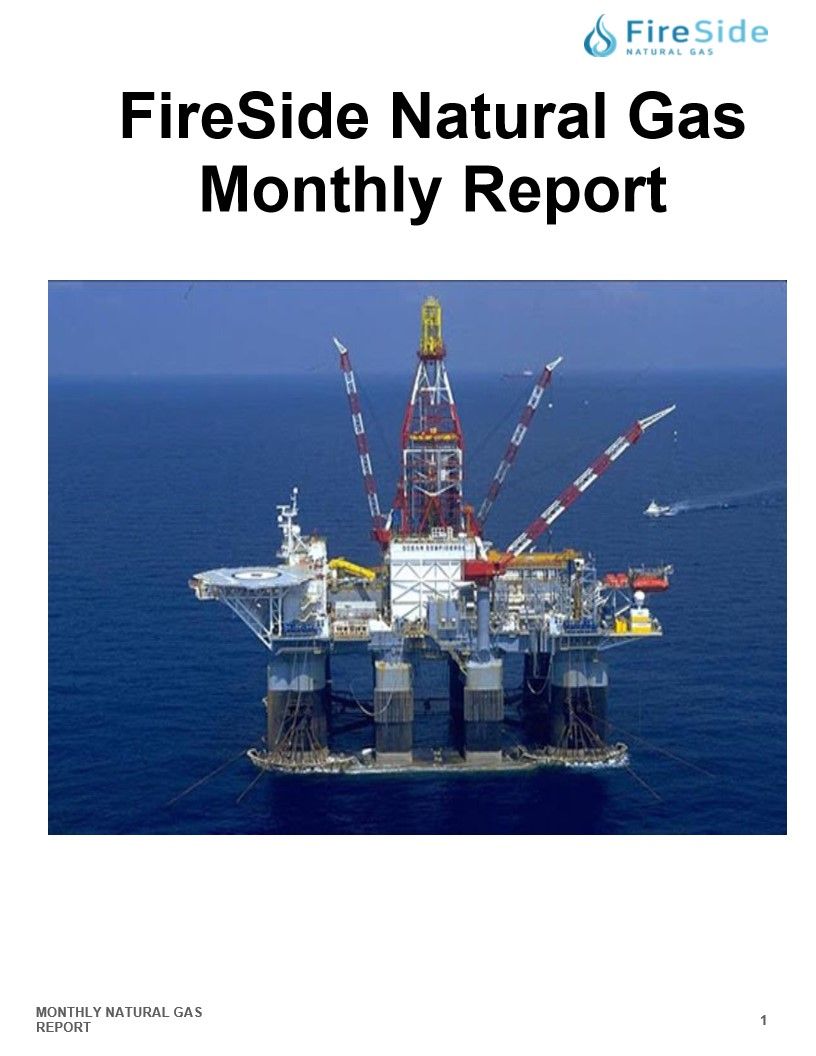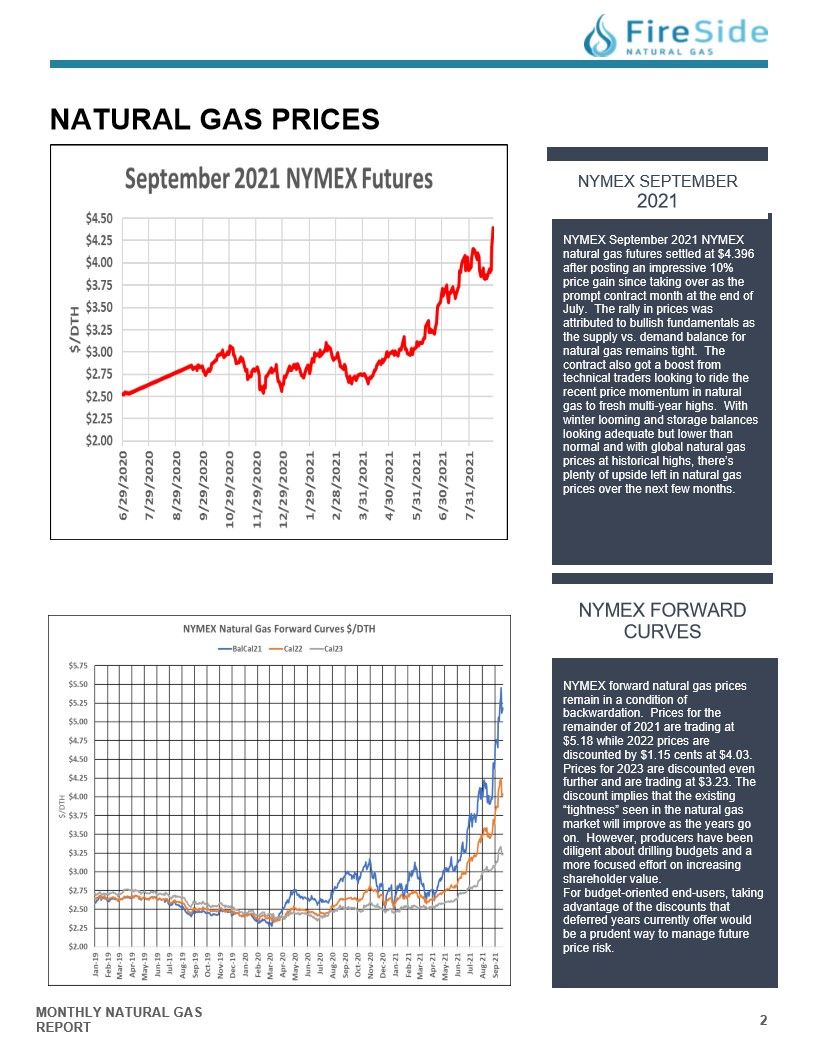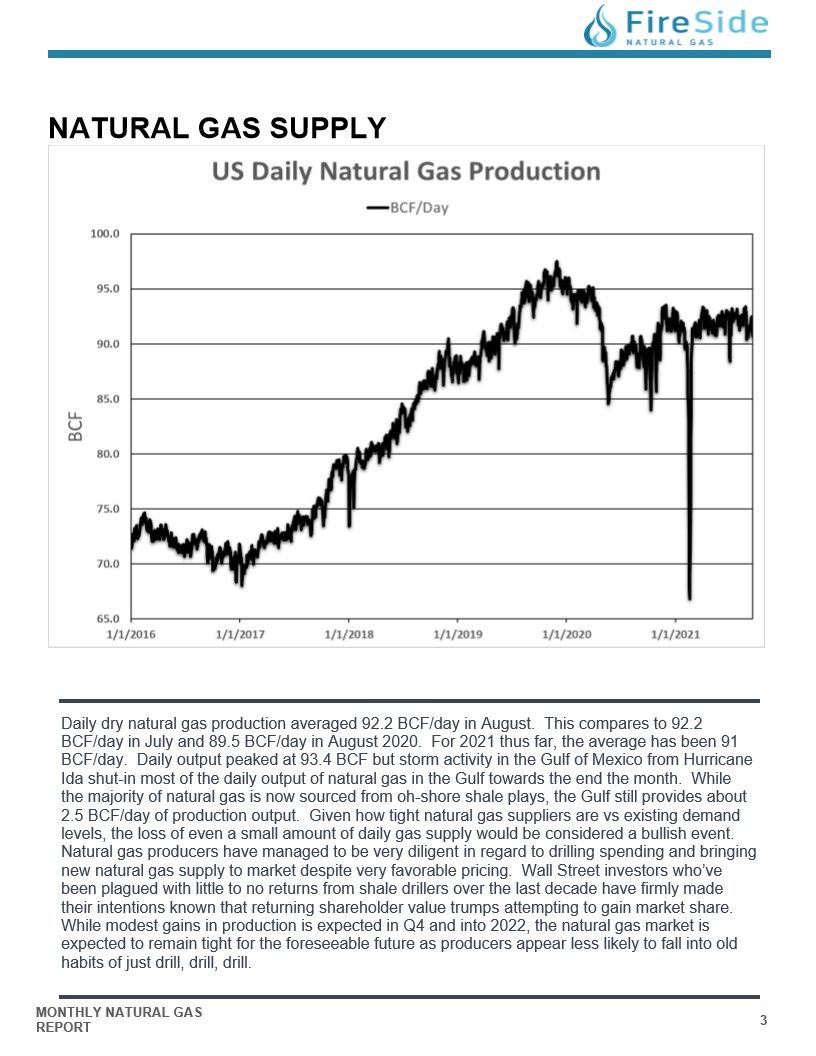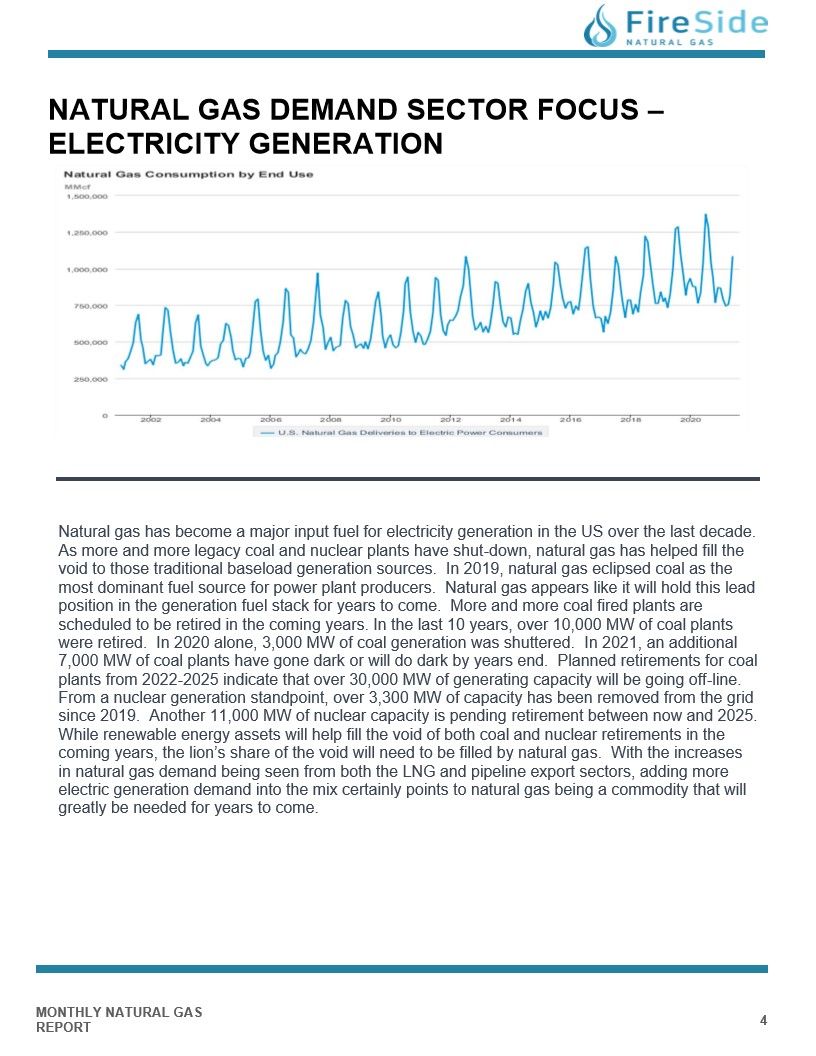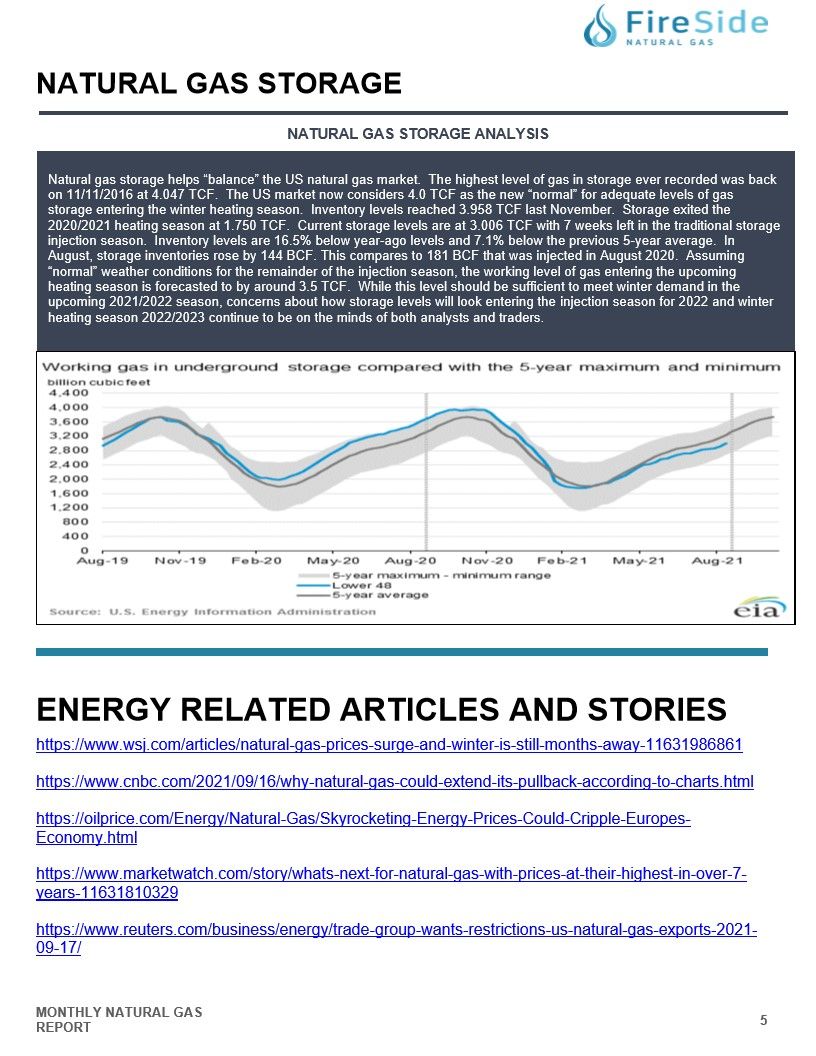The Monthly Natural Gas Market Newsletter - September 2021
FireSide Natural Gas Monthly Report
Natural Gas Prices
NYMEX SEPTEMBER 2021
NYMEX September 2021 NYMEX
natural gas futures settled at $4.396
after posting an impressive 10%
price gain since taking over as the
prompt contract month at the end of
July. The rally in prices was
attributed to bullish fundamentals as
the supply vs. demand balance for
natural gas remains tight. The
contract also got a boost from
technical traders looking to ride the
recent price momentum in natural
gas to fresh multi-year highs. With
winter looming and storage balances
looking adequate but lower than
normal and with global natural gas
prices at historical highs, there's
plenty of upside left in natural gas
prices over the next few months.
NYMEX FORWARD CURVES
NYMEX forward natural gas prices
remain in a condition of
backwardation. Prices for the
remainder of 2021 are trading at
$5.18 while 2022 prices are
discounted by $1.15 cents at $4.03.
Prices for 2023 are discounted even
further and are trading at $3.23. The
discount implies that the existing
"tightness" seen in the natural gas
market will improve as the years go
on. However, producers have been
diligent about drilling budgets and a
more focused effort on increasing
shareholder value.
For budget-oriented end-users, taking
advantage of the discounts that
deferred years currently offer would
be a prudent way to manage future
price risk.
NATURAL GAS SUPPLY - US DAILY PRODUCTION
Daily dry natural gas production averaged 92.2 BCF/day in August. This compares to 92.2
BCF/day in July and 89.5 BCF/day in August 2020. For 2021 thus far, the average has been 91
BCF/day. Daily output peaked at 93.4 BCF but storm activity in the Gulf of Mexico from Hurricane
Ida shut-in most of the daily output of natural gas in the Gulf towards the end the month. While
the majority of natural gas is now sourced from oh-shore shale plays, the Gulf still provides about
2.5 BCF/day of production output. Given how tight natural gas suppliers are vs existing demand
levels, the loss of even a small amount of daily gas supply would be considered a bullish event.
Natural gas producers have managed to be very diligent in regard to drilling spending and bringing
new natural gas supply to market despite very favorable pricing. Wall Street investors who've
been plagued with little to no returns from shale drillers over the last decade have firmly made
their intentions known that returning shareholder value trumps attempting to gain market share.
While modest gains in production is expected in Q4 and into 2022, the natural gas market is
expected to remain tight for the foreseeable future as producers appear less likely to fall into old
habits of just drill, drill, drill.
NATURAL GAS DEMAND SECTOR FOCUS - ELECTRICITY GENERATION
Natural gas has become a major input fuel for electricity generation in the US over the last decade.
As more and more legacy coal and nuclear plants have shut-down, natural gas has helped fill the
void to those traditional baseload generation sources. In 2019, natural gas eclipsed coal as the
most dominant fuel source for power plant producers. Natural gas appears like it will hold this lead
position in the generation fuel stack for years to come. More and more coal fired plants are
scheduled to be retired in the coming years. In the last 10 years, over 10,000 MW of coal plants
were retired. In 2020 alone, 3,000 MW of coal generation was shuttered. In 2021, an additional
7,000 MW of coal plants have gone dark or will do dark by years end. Planned retirements for coal
plants from 2022-2025 indicate that over 30,000 MW of generating capacity will be going off-line.
From a nuclear generation standpoint, over 3,300 MW of capacity has been removed from the grid
since 2019. Another 11,000 MW of nuclear capacity is pending retirement between now and 2025.
While renewable energy assets will help fill the void of both coal and nuclear retirements in the
coming years, the lion's share of the void will need to be filled by natural gas. With the increases
in natural gas demand being seen from both the LNG and pipeline export sectors, adding more
electric generation demand into the mix certainly points to natural gas being a commodity that will
greatly be needed for years to come.
NATURAL GAS STORAGE ANALYSIS
Natural gas storage helps "balance" the US natural gas market. The highest level of gas in storage ever recorded was back
on 11/11/2016 at 4.047 TCF. The US market now considers 4.0 TCF as the new "normal" for adequate levels of gas
storage entering the winter heating season. Inventory levels reached 3.958 TCF last November. Storage exited the
2020/2021 heating season at 1.750 TCF. Current storage levels are at 3.006 TCF with 7 weeks left in the traditional storage
injection season. Inventory levels are 16.5% below year-ago levels and 7.1% below the previous 5-year average. In
August, storage inventories rose by 144 BCF. This compares to 181 BCF that was injected in August 2020. Assuming
"normal" weather conditions for the remainder of the injection season, the working level of gas entering the upcoming
heating season is forecasted to by around 3.5 TCF. While this level should be sufficient to meet winter demand in the
upcoming 2021/2022 season, concerns about how storage levels will look entering the injection season for 2022 and winter
heating season 2022/2023 continue to be on the minds of both analysts and traders.
ENERGY RELATED ARTICLES AND STORIES
https://www.wsj.com/articles/natural-gas-prices-surge-and-winter-is-still-months-away-11631986861
https://www.cnbc.com/2021/09/16/why-natural-gas-could-extend-its-pullback-according-to-charts.html
https://oilprice.com/Energy/Natural-Gas/Skyrocketing-Energy-Prices-Could-Cripple-EuropesEconomy.html
